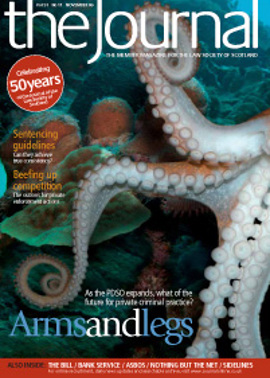Work and families

On 1 October the new age discrimination legislation was the primary focus of attention and one might be forgiven for only having glanced at other provisions which took effect that day. Alongside gangmaster licensing, a fire safety overhaul, national minimum wage uprating and collective consultation tweaking, a raft of provisions flowing from the Work and Families Act 2006 aim at providing greater choice for families looking to balance work and caring responsibilities.
Although the new provisions took effect in October, they apply where the expected week of childbirth (EWC) – or the expected week of an adoption placement – falls on or after 1 April 2007. It may be tempting to assume that clients have until then to get their new policies drafted and into place. However, if a woman were to give birth prematurely, the new provisions would still apply, so updating should begin in earnest.
Maternity provisions
Currently all women are entitled to 26 weeks’ ordinary maternity leave, but must have six months’ service by the 14th week before the EWC in order to qualify for a further 26 weeks. For those expecting a child on or after 1 April 2007, this distinction will be removed and all women will be entitled to 12 months’ leave.
As for pay during leave, women are currently entitled to 26 weeks’ statutory maternity pay. Where the EWC is on or after 1 April, this is extended to 39 weeks. The government’s ultimate aim is to extend the period to a full year before the end of the current parliament.
Each year, 30,000 women are forced out of their jobs simply for being pregnant or taking maternity leave, according to EOC estimates, and so three new provisions are introduced to encourage two-way communication during maternity leave. “Keeping in Touch” days will allow employees to do some work during their leave period without losing maternity pay or bringing their leave to an end, as would happen at the moment. They may be useful, for example, for team planning or training days. However, it is important to note that use of these days must be by agreement. All employees will be entitled to 10 such days regardless of the length of their leave period. As the purpose of a KIT day is to allow employees to do some work under their contracts, the government expects employers to pay employees, and policies will need to set out how contractual pay will work alongside any statutory pay.
The EOC’s formal investigation suggested that employers’ uncertainty about maternity leave could lead to discrimination. With this in mind, the notice a woman must give if she wishes to change her return date is increased from 28 days to eight weeks. The government has also taken the opportunity to clarify that an employer or employee is entitled to make reasonable contact from time to time with the other during maternity leave, for example to clarify a return date.
Adoption provisions
At the moment, those adopters who are entitled to 26 weeks’ ordinary adoption leave are also entitled to 26 weeks’ additional adoption leave. This will not change. However, statutory adoption pay will be increased to 39 weeks and KIT days will operate in the same way as during maternity leave.
Flexible working
The right to request flexible working – currently available to those with children under six, or disabled children under 18 – is extended to carers of adults from April. To illustrate the potential impact of this, 6 million people aged 16 or over are estimated to care for a sick, disabled or elderly person. The government is consulting further on the definition of a “carer”. Draft regulations have suggested extending the right to those who care for “relatives, partners or people living with [the carer]”. However, employee and carer representatives are pushing for as wide a definition as possible, suggesting: “Carers are employees with significant caring responsibilities that have a substantial impact on their working lives. These employees are responsible for the care and support of disabled, elderly or sick partners, relatives or friends who are unable to care for themselves.” Whichever definition is adopted, these provisions will have a significant impact.
Paternity leave
Finally, the government plans to allow fathers to take additional paternity leave of up to 26 weeks if the mother returns to work before exhausting her entitlement to maternity leave and pay. Further consultation is taking place to determine how this will actually work in practice. Expect it to be introduced at the same time as the provisions entitling women to a full year’s maternity pay.
In any one year in Britain it is estimated that 350,000 women will be pregnant and around 7% of births are premature. With this in mind, clients who don’t want to be left holding the baby would be well advised to have their new policies and practices in place by the turn of the year.
Jane Fraser, Head of Employment, Pensions and Benefits, Maclay Murray & Spense
In this issue
- Home and away
- The importance of kinship care
- Growing arms and legs
- Changing its spots?
- Guiding hand
- Trustbusters unite
- Closing the books
- Spam: the managed solution
- Nothing like Nothing but the Net!
- Banking on service
- You want certified?
- Enough is enough
- Provision and prejudice
- Work and families
- Cash trapped
- Man of business
- Scottish Solicitors' Discipline Tribunal
- Website reviews
- Book reviews
- Sale questionnaire to be tested
- So long, and thanks for all the fizz
- ASBO, the young misfit






